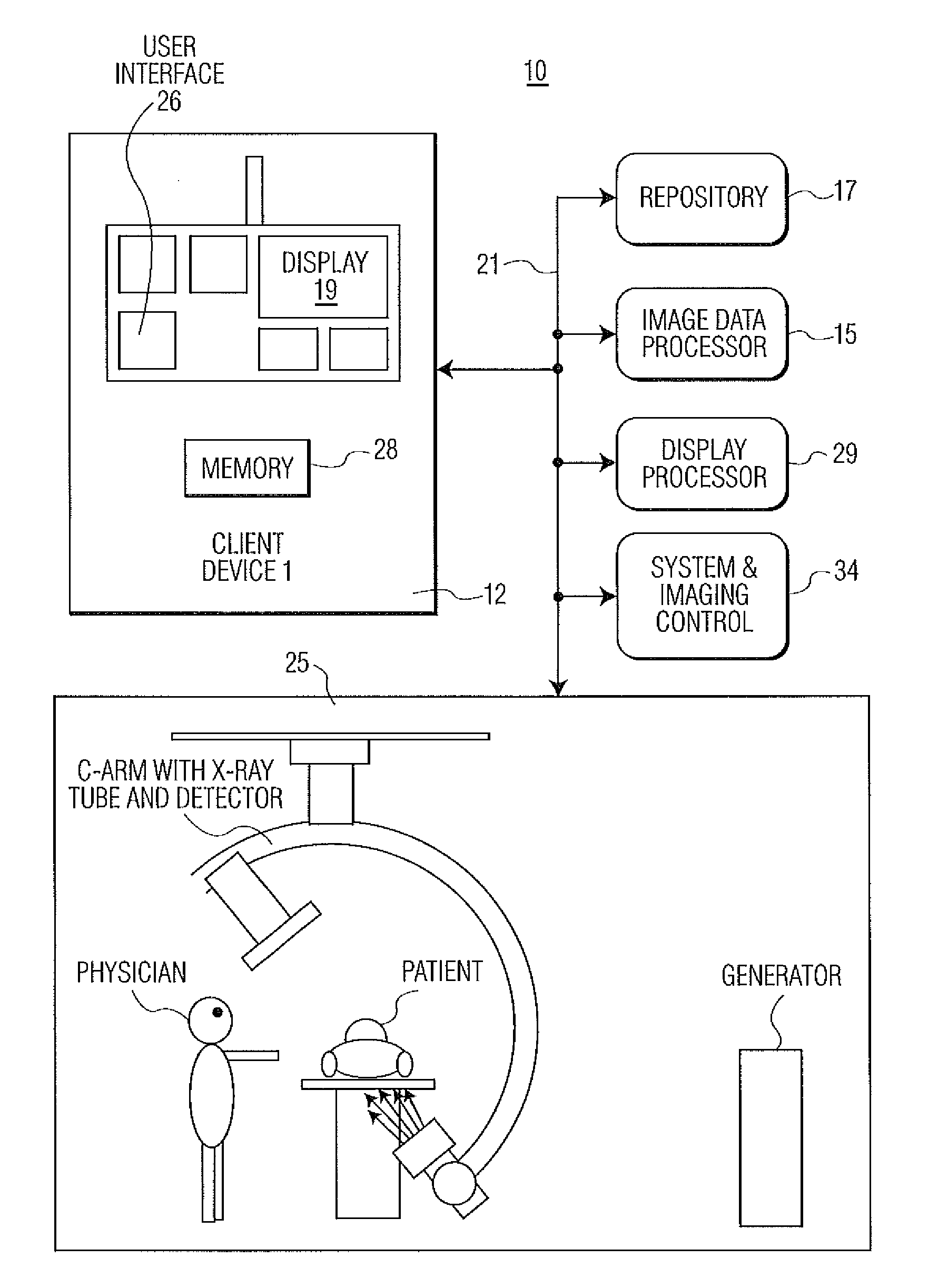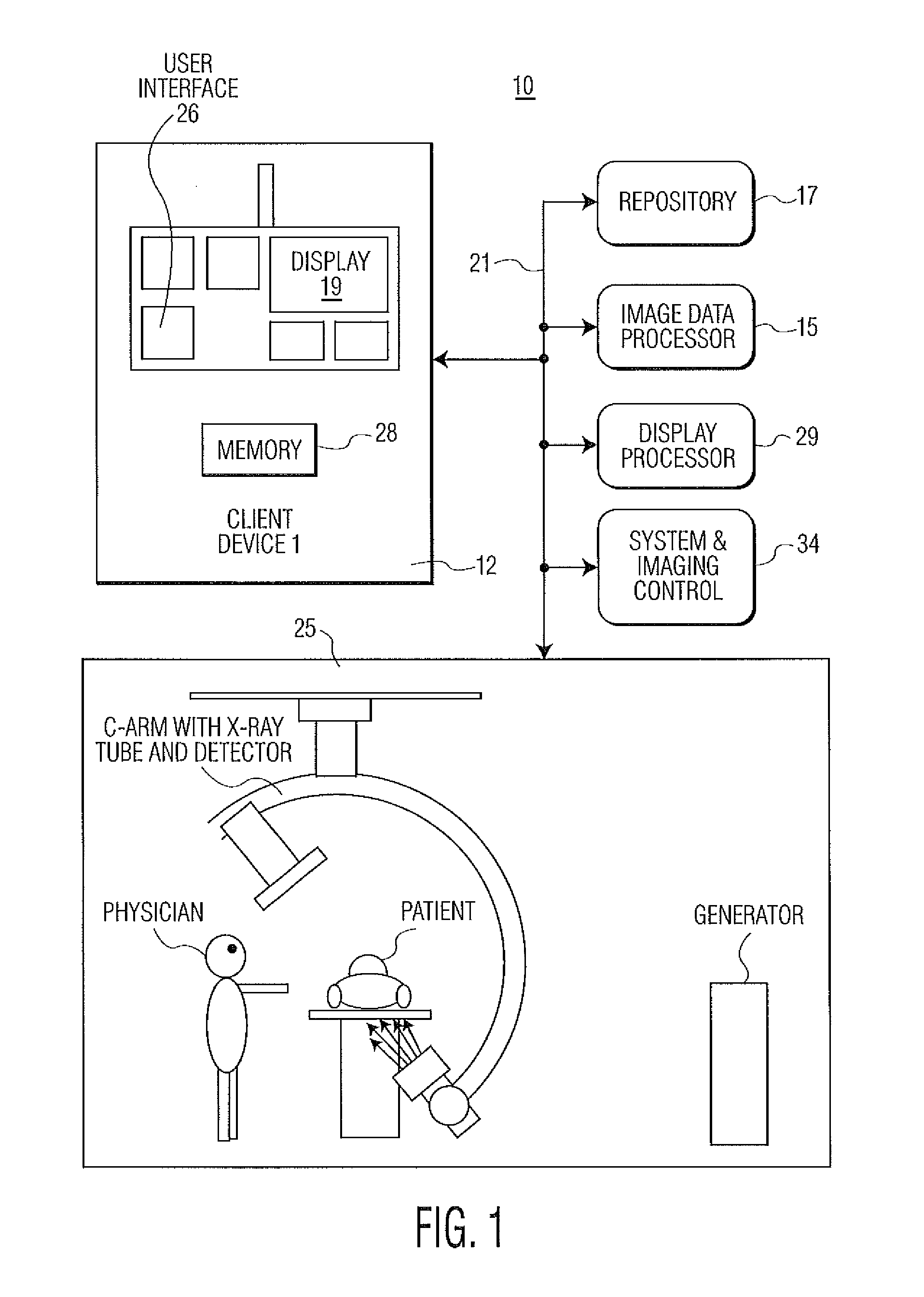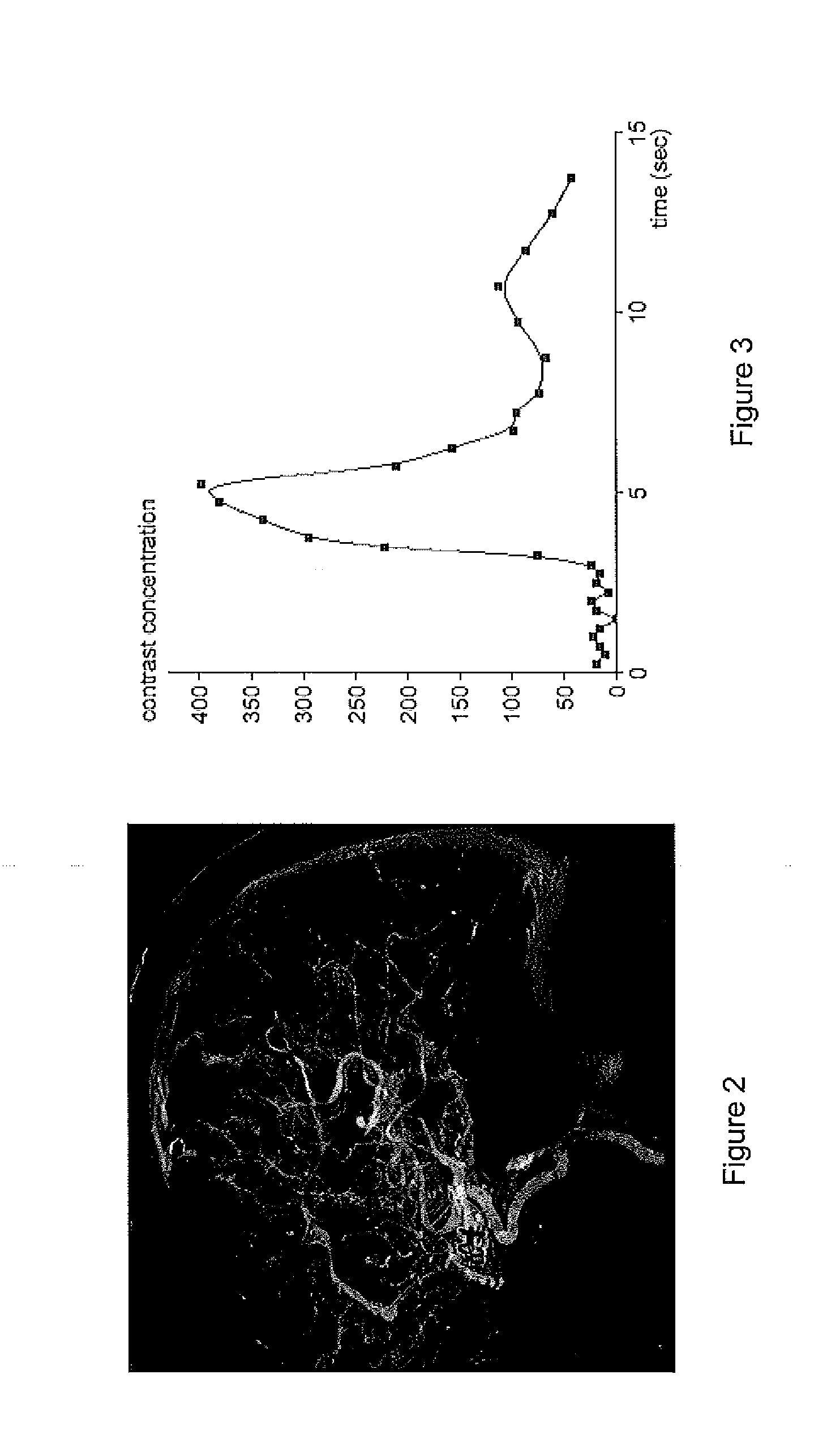System for Providing Digital Subtraction Angiography (DSA) Medical Images
a technology of digital subtraction angiography and medical images, applied in the field of providing digital subtraction angiography (dsa) medical images, can solve the problems of difficult tolerating contrast agents, difficult to obtain additional dsa images, and complex vascular anatomy
- Summary
- Abstract
- Description
- Claims
- Application Information
AI Technical Summary
Problems solved by technology
Method used
Image
Examples
Embodiment Construction
A system generates a visually (e.g., color) coded 3D image that depicts 3D vascular function information including transit time of blood flow through the anatomy. A transit time curve identifies blood flow by tracking the flow of contrast agent through a region of the anatomy (tissue or vessel). The transit time curve itself plots the X-ray luminance of a pixel or region of pixels in a DSA sequence over the time duration length of the DSA sequence: the amount of contrast in the region of interest over time. Since the blood is carrying the contrast agent, it is possible to obtain a functional measure of the time required for blood to flow through the vessel by examining the time to peak value or time to leading edge of the transit time curves at different locations in the vessel. The functional information is provided using multiple subtracted angiography acquisitions of patient anatomy, while a 3D image of the vasculature provides the morphology of the vascular anatomy. The function...
PUM
 Login to View More
Login to View More Abstract
Description
Claims
Application Information
 Login to View More
Login to View More - R&D
- Intellectual Property
- Life Sciences
- Materials
- Tech Scout
- Unparalleled Data Quality
- Higher Quality Content
- 60% Fewer Hallucinations
Browse by: Latest US Patents, China's latest patents, Technical Efficacy Thesaurus, Application Domain, Technology Topic, Popular Technical Reports.
© 2025 PatSnap. All rights reserved.Legal|Privacy policy|Modern Slavery Act Transparency Statement|Sitemap|About US| Contact US: help@patsnap.com



